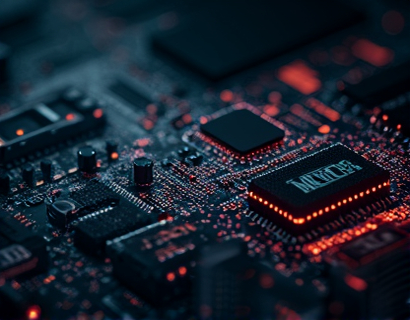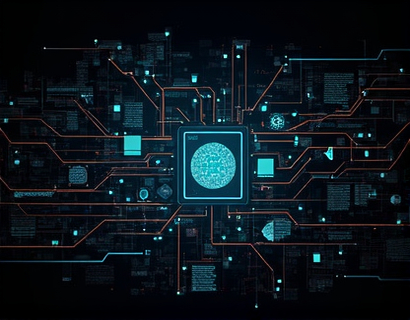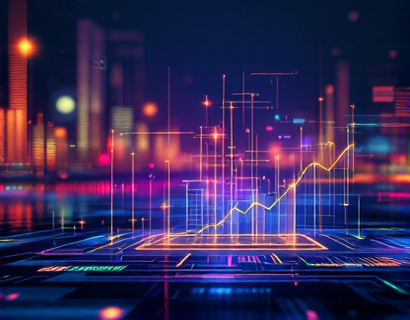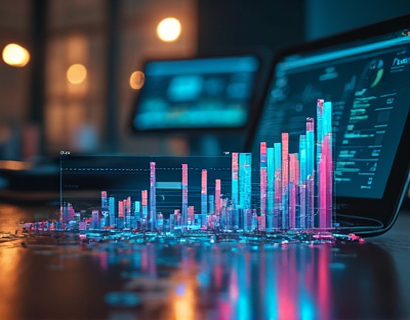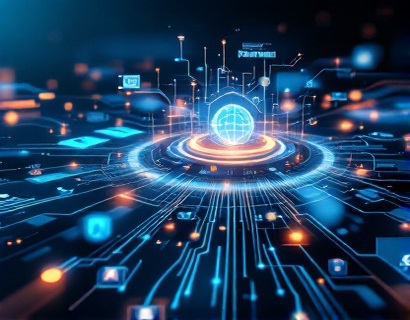Next-Gen Smart Contract AMMs: Revolutionizing DeFi Trading with Advanced Automation and Liquidity Management
The decentralized finance (DeFi) ecosystem has witnessed exponential growth, driven by innovative technologies and smart contract applications. Among these advancements, Automated Market Makers (AMMs) have emerged as a pivotal component, offering a decentralized alternative to traditional order books. Next-generation smart contract AMMs are redefining the landscape of DeFi trading by integrating advanced automation and sophisticated liquidity management. This article delves into the transformative impact of these technologies, exploring how they are enhancing the trading experience for crypto traders and DeFi enthusiasts.
Traditional AMMs rely on predefined formulas to determine asset prices and execute trades. However, next-gen AMMs leverage machine learning algorithms and real-time data analytics to dynamically adjust pricing and liquidity provision. This adaptive approach ensures that the AMM remains efficient and responsive to market conditions, minimizing slippage and improving trade execution.
One of the key features of advanced smart contract AMMs is their ability to optimize liquidity management. Liquidity providers (LPs) can now benefit from smart contracts that automatically rebalance pools based on market demand and volatility. This automation not only reduces the risk of impermanent loss but also ensures that liquidity is allocated where it is most needed, enhancing the overall liquidity of the platform.
Automated trading strategies are another cornerstone of next-gen AMMs. These strategies utilize smart contracts to execute trades based on predefined criteria, such as price thresholds, moving averages, and other technical indicators. By removing the need for manual intervention, these automated strategies enable traders to capitalize on market opportunities 24/7, without the constraints of time zones or human error.
The integration of advanced automation in AMMs extends beyond trading strategies to include risk management and portfolio optimization. Smart contracts can be programmed to monitor portfolio performance, adjust positions, and execute hedging strategies in real-time. This level of automation not only enhances efficiency but also allows traders to focus on higher-level decision-making, leveraging the power of decentralized algorithms to manage their assets effectively.
Liquidity provision in next-gen AMMs is further enhanced through innovative incentive mechanisms. These mechanisms use token rewards, fee sharing, and other incentives to attract and retain liquidity providers. Smart contracts can dynamically adjust these incentives based on market conditions, ensuring that liquidity remains robust even during periods of low market activity. This adaptive incentive structure helps maintain a healthy liquidity ecosystem, benefiting both LPs and traders.
The use of advanced data analytics in next-gen AMMs provides unprecedented insights into market trends and trader behavior. By analyzing large datasets, these AMMs can identify patterns, predict price movements, and optimize their operations accordingly. This data-driven approach not only improves the accuracy of price discovery but also enhances the overall trading experience by providing traders with valuable insights and actionable intelligence.
Security is a paramount concern in the DeFi space, and next-gen smart contract AMMs are designed with robust security features to protect user assets. Advanced cryptographic techniques, regular audits, and decentralized governance models ensure that the platform remains secure and trustworthy. Smart contracts are thoroughly vetted to identify and mitigate potential vulnerabilities, providing users with peace of mind as they engage in trading activities.
Interoperability is another critical aspect of next-gen AMMs. These platforms are built to seamlessly integrate with other DeFi protocols and blockchain networks, enabling cross-chain liquidity and asset transfers. This interoperability expands the reach of the AMM, allowing traders to access a broader range of assets and markets, thereby increasing liquidity and enhancing market efficiency.
The user interface and experience (UI/UX) of next-gen AMMs have also seen significant improvements. Intuitive dashboards, real-time market data, and streamlined trading workflows make it easier for users to navigate and execute trades. These enhancements cater to both novice and experienced traders, ensuring that the platform is accessible and user-friendly.
Scalability is a challenge that next-gen AMMs address through layer 2 solutions and optimized smart contract design. By offloading transactions to secondary layers, these AMMs can handle a higher volume of trades without compromising performance. This scalability ensures that the platform remains responsive and efficient, even during peak trading periods.
In conclusion, next-gen smart contract AMMs are revolutionizing DeFi trading by combining advanced automation, sophisticated liquidity management, and innovative incentive mechanisms. These technologies not only enhance the trading experience but also foster a more efficient and secure decentralized finance ecosystem. As the DeFi landscape continues to evolve, the role of advanced AMMs will become increasingly vital, driving further innovation and adoption in the crypto space.






